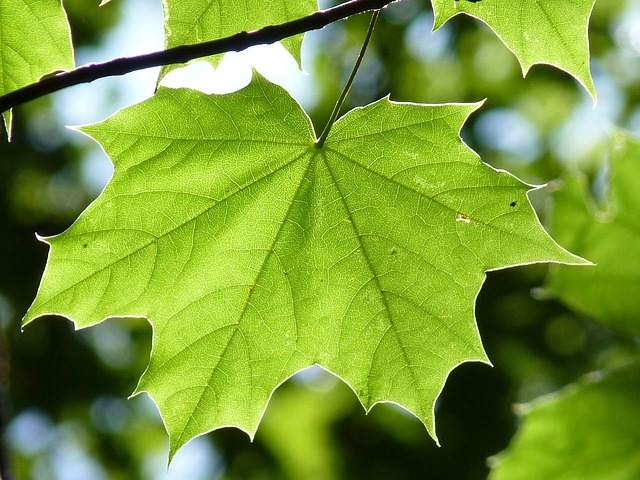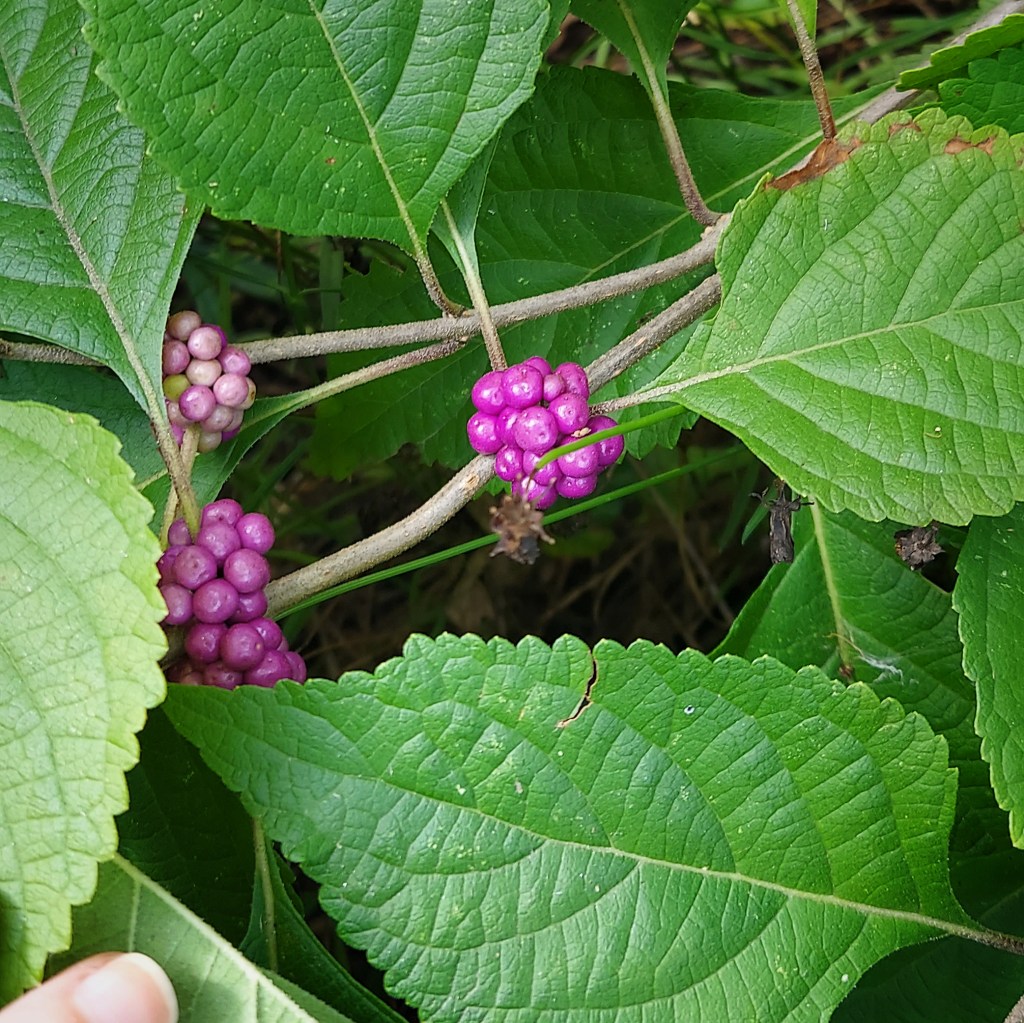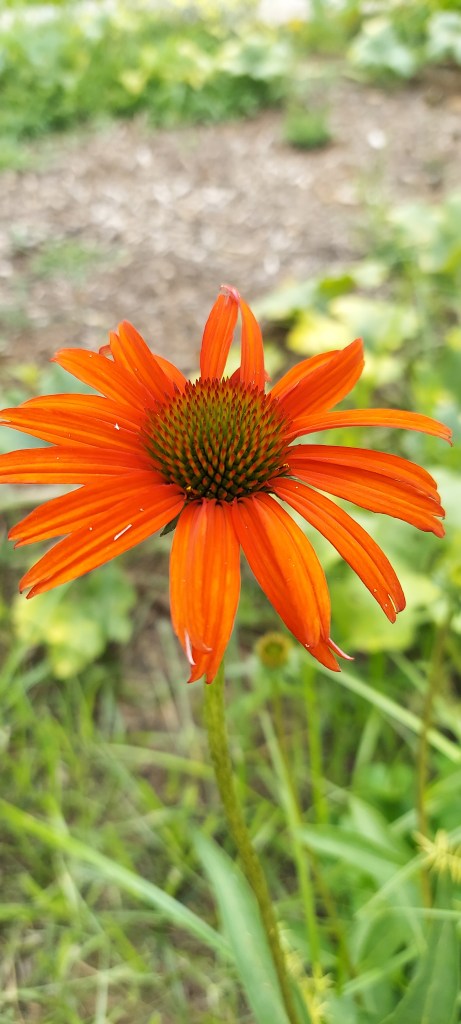It’s been a while since I’ve written about my ongoing battle against the lawn. It started with a tarp, then went on to solarizing, then sheet mulching, then replacing the unwanted turf grass with native groundcovers, to discovering some kind of gigantic alien mystery plant we didn’t plant that accidentally ended up being delicious.
So, since it’s been about a year and a half, how’s it going?
The grass hasn’t come back. Instead, the area is made up of (mostly) mulch, interspersed with some slow-growing moss phlox (Phlox subulata), bee balm (Monarda fistulosa), violets (Viola sororia), and echinacea (Echinacea purpurea) plants. Occasionally, I’ll find a patch of native wild onion (Allium canadense). The border closest to the house is made up of non-native strawberries, which the birds, squirrels, carpenter bees, and also I seem to enjoy. Along the front path, there’s thread leaf coreopsis (Coreopsis verticillata). In the center, there’s the little redbud tree (Cercis canadensis).
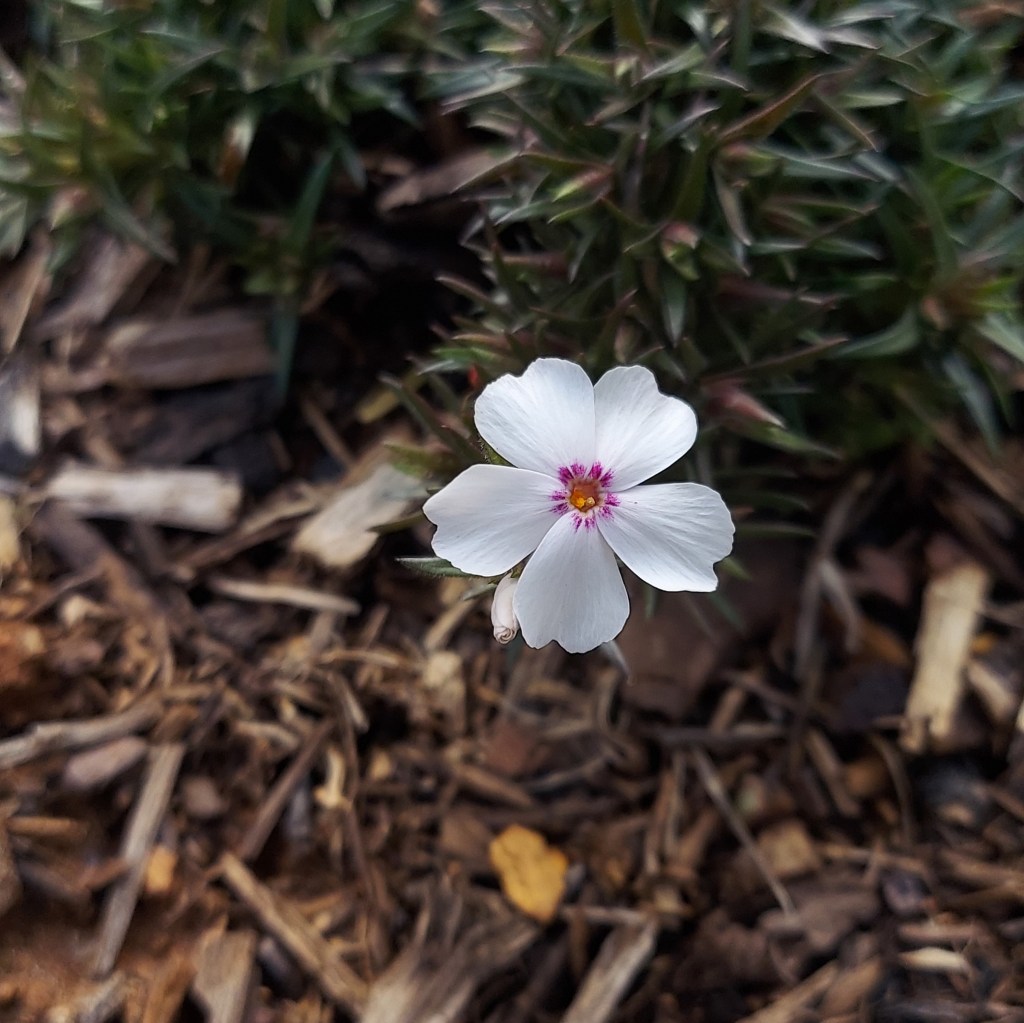
There are also small mats of non-native “weeds,” like chickweed, purple deadnettle, and speedwell. These aren’t exactly what I was going for, but they do have several advantages over grass:
- I’m not allergic to them. Flowering plants like these are typically pollinated by insects. Grasses are wind pollinated. Wind pollinated plants are much more likely to be responsible for allergies, because their pollen ends up in the air (and eventually your eyes, nose, and lungs). This is also why bee pollen is generally not a great way to desensitize oneself to hay fever — it’s primarily made up of sticky, heavier flower pollens, rather than the wind-carried pollens that people with hay fever most commonly react to.
- They’re edible. Chickweed is actually pretty nutritious, and so is purple deadnettle. I’m not up on all of the nutrition facts and medicinal uses of speedwell, but I am assured that it is also edible.
- They’re not invasive enough to be restricted. While these three plants aren’t native species, they typically have pretty shallow root systems and aren’t super competitive.
- They require no effort. Unlike lawn grasses, they don’t need fertilizing, pesticide, weed treatment, or supplemental irrigation. While they’re not as beneficial as native groundcovers, they’re at least not a net negative like turf grass.
- They’re an early food source for pollinators and small herbivores. Since they’re not native to the US, they haven’t evolved alongside our native pollinators and thus aren’t really an ideal source of nectar. They do, however, provide more food that a mowed monoculture lawn does.
- Honestly, it looks better. I’m not a fan of the manicured look of suburban lawns. This spot has a ways to go still, but tiny blue, purple, and white flowers and multi-hued foliage beat grass any day.
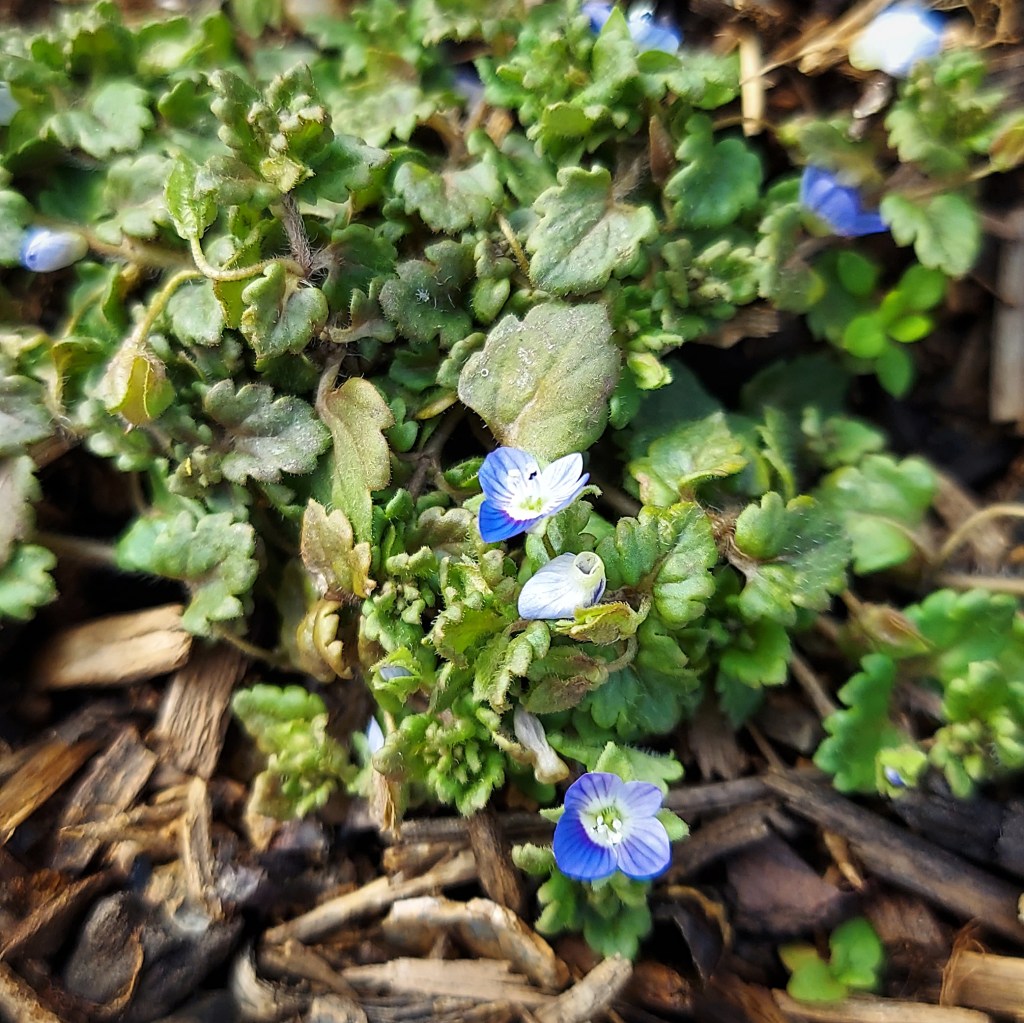
Should anyone run out and sow a speedwell, deadnettle, or chickweed lawn? No, not in the US. (Non-native clover lawns aren’t really a great idea, either.) Nonetheless, I’m in less of a hurry to eradicate these plants than I was to get rid of the grass. It’s reassuring to see other plants moving into an area that was once a mowed, lifeless monoculture.
And, if you’re an invasivore, you can always eat them.
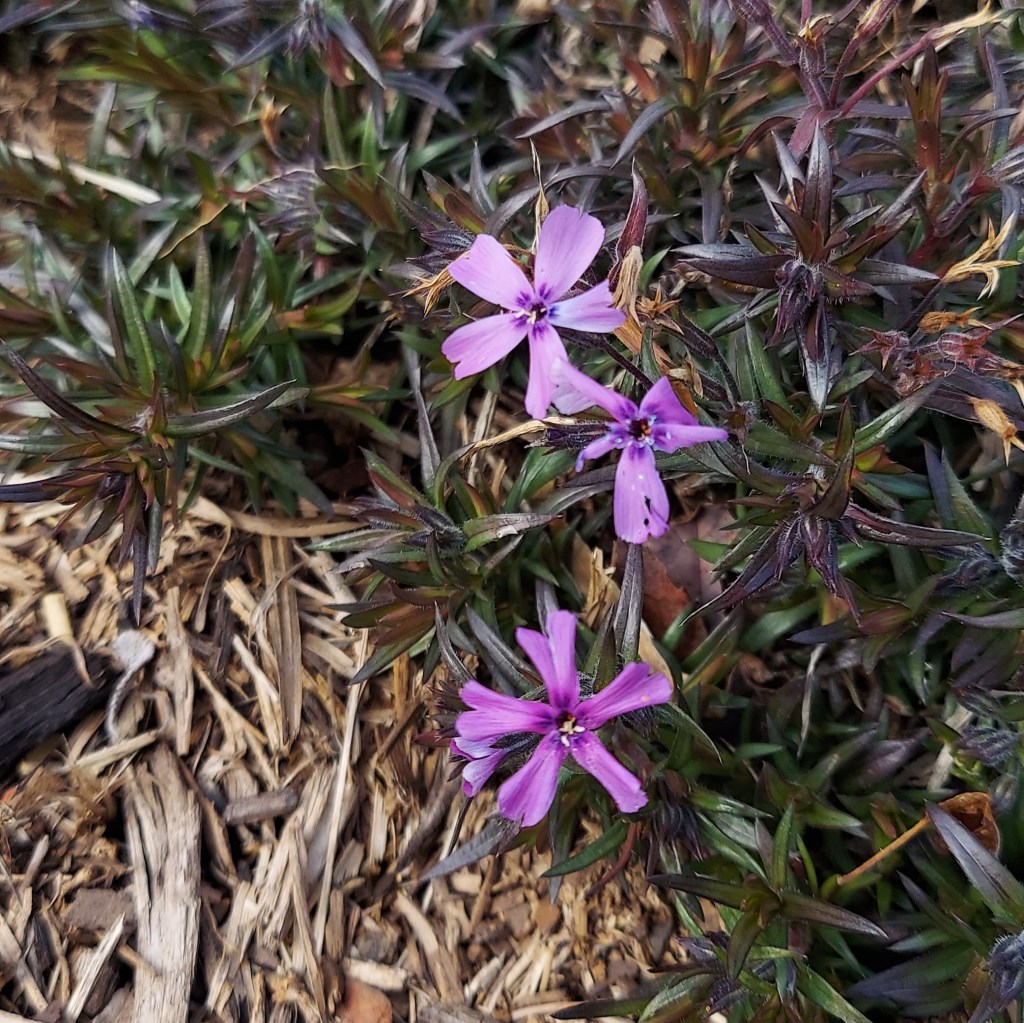
This year, the plan is to plant more moss phlox and bee balm, and maybe another coreopsis or two. I’d also like to find a source for native strawberries. These grow in slightly different conditions to the cultivated strawberries you usually see in garden stores and groceries and are a good addition to “edible landscaping” plans. For now, I’m pretty happy with the progress this little patch of dirt has made!


















